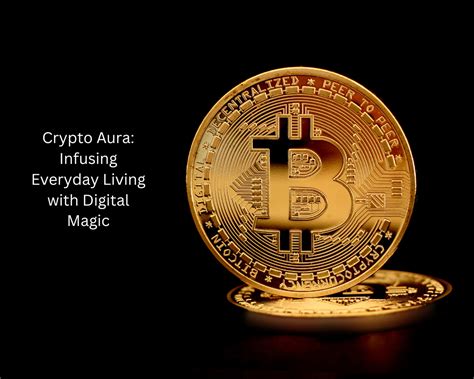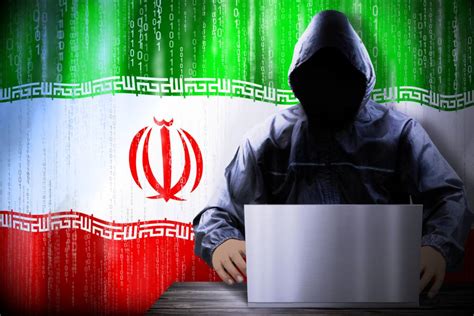
A new cryptocurrency, Aura, is emerging as a potential contender to Bitcoin’s dominance, boasting faster transaction speeds and a more energy-efficient consensus mechanism, sparking debate about the future of digital currencies.
Aura, a relatively new cryptocurrency, is making waves in the digital finance world as a potential successor to Bitcoin, challenging the established giant with its innovative technology and promises of enhanced sustainability. While Bitcoin remains the most recognized and widely adopted cryptocurrency, its limitations in transaction speed and environmental impact have opened the door for alternatives like Aura to gain traction. This new entrant aims to address some of the key concerns surrounding Bitcoin, positioning itself as a more efficient and environmentally friendly option for the future of digital transactions.
Aura’s core innovation lies in its use of a novel consensus mechanism called “Proof-of-Stake-Variance” (PoSV), designed to significantly reduce energy consumption compared to Bitcoin’s Proof-of-Work (PoW) system. PoW, the foundation of Bitcoin’s security, requires vast amounts of computing power to solve complex mathematical problems, leading to significant electricity usage and environmental concerns. Aura’s PoSV mechanism, on the other hand, selects validators based on the number of coins they hold and their staking period, reducing the need for excessive computational resources. This method, according to Aura’s developers, can reduce energy consumption by up to 99% compared to Bitcoin.
Beyond its energy efficiency, Aura also promises faster transaction speeds. Bitcoin’s average transaction confirmation time can range from 10 minutes to over an hour, depending on network congestion. Aura aims to reduce this time to a few seconds, enabling quicker and more seamless transactions. This speed advantage is achieved through a combination of its PoSV consensus and optimized block creation times. The developers claim that Aura can process several thousand transactions per second (TPS), significantly outperforming Bitcoin’s average of 7 TPS.
The potential for Aura to disrupt the cryptocurrency landscape has attracted attention from investors and industry experts alike. While Bitcoin has established itself as a store of value and a hedge against inflation, its limitations have spurred the development of alternative cryptocurrencies that address specific shortcomings. Aura’s focus on sustainability and scalability positions it as a compelling option for users seeking a more efficient and environmentally conscious digital currency.
However, the path to challenging Bitcoin’s reign is fraught with challenges. Bitcoin benefits from its first-mover advantage, a vast network effect, and widespread recognition. Aura, as a new entrant, needs to overcome these hurdles to gain significant adoption. Building trust and credibility is crucial, as is demonstrating the long-term viability and security of its network.
The success of Aura will depend on several factors, including its ability to attract a large user base, build a robust ecosystem of applications and services, and maintain its technological advantages over time. Regulatory scrutiny and market volatility also pose potential risks. The cryptocurrency market is constantly evolving, and new innovations are emerging regularly. Aura will need to adapt and innovate to stay ahead of the competition and maintain its relevance in the long run.
According to a recent statement by Aura’s lead developer, “Our vision is to create a digital currency that is not only efficient and scalable but also sustainable and environmentally responsible. We believe that Aura has the potential to revolutionize the way people transact and interact with digital assets.”
The emergence of Aura highlights the ongoing innovation and evolution in the cryptocurrency space. While Bitcoin remains the dominant player, the rise of alternative cryptocurrencies like Aura underscores the potential for new technologies to disrupt established markets and address existing limitations. The future of digital currencies is likely to be characterized by a diverse ecosystem of competing technologies, each with its own strengths and weaknesses. Whether Aura can truly challenge Bitcoin’s reign remains to be seen, but its emergence signals a new chapter in the ongoing evolution of digital finance.
Detailed Analysis of Aura’s Technology and Potential Impact
Aura’s technological underpinnings and potential for broader impact warrant a deeper examination. The cryptocurrency’s architecture is built upon the principle of addressing key criticisms levied against Bitcoin, mainly its energy inefficiency and scalability limitations.
Proof-of-Stake-Variance (PoSV) in Detail:
The consensus mechanism is the heart of any blockchain network. Bitcoin employs Proof-of-Work (PoW), where miners compete to solve complex cryptographic puzzles to validate transactions and create new blocks. This process consumes a significant amount of electricity, leading to environmental concerns and criticisms. Aura’s PoSV mechanism aims to circumvent these issues by replacing computational power with stakeholding.
In a PoSV system, users “stake” their coins to become validators. The probability of being selected as a validator is proportional to the amount of coins staked and the length of time they have been staked. This incentivizes users to hold and stake their coins, contributing to the stability and security of the network. The variance component further refines the selection process, introducing an element of randomness to prevent any single entity from dominating the validation process.
The specific implementation of PoSV in Aura involves a sophisticated algorithm that considers several factors, including:
- Coin Age: The length of time a user has held their coins. Longer holding periods increase the likelihood of being selected as a validator.
- Stake Size: The amount of coins staked by a user. Larger stakes increase the probability of selection.
- Randomness Factor: A randomly generated number that adds an element of unpredictability to the selection process.
This combination of factors aims to create a fair and decentralized validation process while minimizing energy consumption. The developers claim that Aura’s PoSV system can reduce energy consumption by up to 99% compared to Bitcoin’s PoW system, making it a much more environmentally friendly alternative.
Scalability and Transaction Speed:
Bitcoin’s transaction speed has been a persistent bottleneck, limiting its usability for everyday transactions. The average transaction confirmation time on the Bitcoin network can range from 10 minutes to over an hour, and the network can only process around 7 transactions per second (TPS). This limitation has led to high transaction fees during periods of network congestion.
Aura aims to address this issue by optimizing its block creation time and employing techniques such as sharding to improve scalability. Sharding involves dividing the blockchain into smaller, more manageable pieces called shards, each of which can process transactions independently. This allows the network to handle a much higher volume of transactions in parallel.
The developers claim that Aura can process several thousand transactions per second (TPS), significantly outperforming Bitcoin’s average of 7 TPS. This improved transaction speed and scalability would make Aura a more viable option for everyday transactions, such as online purchases and peer-to-peer payments.
Ecosystem Development and Adoption:
The success of any cryptocurrency depends on its ability to build a vibrant ecosystem of applications and services. Bitcoin has a significant advantage in this regard, with a vast network of wallets, exchanges, merchants, and developers supporting its use.
Aura needs to attract developers and entrepreneurs to build applications and services on its platform to gain widespread adoption. This requires providing a user-friendly development environment, offering incentives for developers to build on Aura, and fostering a strong community around the cryptocurrency.
The Aura team has outlined plans to develop a range of applications and services, including:
- Decentralized Exchange (DEX): A platform for trading Aura and other cryptocurrencies in a decentralized manner.
- Payment Gateway: A solution for merchants to accept Aura as payment for goods and services.
- Decentralized Applications (dApps): Applications built on the Aura blockchain that offer a variety of services, such as social media, gaming, and finance.
Building a strong ecosystem will be crucial for Aura to gain mainstream adoption and compete with established cryptocurrencies like Bitcoin.
Security Considerations:
Security is paramount in the cryptocurrency world. Bitcoin’s PoW system has proven to be highly secure, withstanding numerous attacks over the years. Aura’s PoSV system needs to demonstrate a similar level of security to gain the trust of users and investors.
One potential concern with PoSV systems is the risk of “stake grinding,” where malicious actors attempt to manipulate the validator selection process to increase their chances of being selected. Aura’s developers have implemented various safeguards to mitigate this risk, including:
- Randomized Validator Selection: The introduction of a randomness factor in the validator selection process makes it more difficult for malicious actors to predict and manipulate the outcome.
- Slashing Penalties: Validators who attempt to manipulate the network or engage in malicious behavior are penalized by having their stake slashed, discouraging such behavior.
- Byzantine Fault Tolerance (BFT): A mechanism that allows the network to continue functioning even if some validators are malicious or compromised.
While these safeguards can help to mitigate the risk of attacks, the security of Aura’s PoSV system will need to be continuously monitored and improved over time.
Regulatory Landscape and Market Volatility:
The cryptocurrency market is subject to significant regulatory uncertainty and market volatility. Regulatory scrutiny can impact the adoption and use of cryptocurrencies, while market volatility can lead to significant price fluctuations.
Aura needs to navigate the evolving regulatory landscape and manage market volatility to ensure its long-term viability. This requires working with regulators to establish clear and consistent rules for the cryptocurrency industry, as well as implementing risk management strategies to mitigate the impact of market volatility.
Comparison with Other Alternative Cryptocurrencies:
Aura is not the only cryptocurrency attempting to challenge Bitcoin’s dominance. Several other alternative cryptocurrencies, such as Ethereum, Cardano, and Solana, have emerged with their own unique features and advantages.
Ethereum, for example, is a smart contract platform that allows developers to build decentralized applications (dApps). Cardano is a proof-of-stake cryptocurrency that focuses on security and sustainability. Solana is a high-performance blockchain that aims to provide fast and low-cost transactions.
Each of these cryptocurrencies has its own strengths and weaknesses, and the success of Aura will depend on its ability to differentiate itself and offer unique value to users.
Future Prospects and Challenges:
Aura has the potential to disrupt the cryptocurrency landscape and become a significant player in the digital finance world. Its focus on sustainability, scalability, and security positions it as a compelling alternative to Bitcoin.
However, Aura also faces significant challenges, including:
- Gaining Adoption: Attracting a large user base and building a robust ecosystem of applications and services will be crucial for Aura to gain mainstream adoption.
- Maintaining Security: Ensuring the long-term security of its PoSV system will be essential to gain the trust of users and investors.
- Navigating Regulatory Uncertainty: Dealing with the evolving regulatory landscape and managing market volatility will be critical for Aura to maintain its viability.
- Competition: Differentiating itself from other alternative cryptocurrencies and offering unique value to users will be necessary to stay ahead of the competition.
Overcoming these challenges will require a strong team, a clear vision, and a commitment to innovation. Whether Aura can truly challenge Bitcoin’s reign remains to be seen, but its emergence signals a new chapter in the ongoing evolution of digital finance. The developers must execute their roadmap effectively, adapt to market changes, and prioritize community engagement to increase its chances of long-term success.
Industry Expert Perspectives:
Several industry experts have weighed in on the potential of Aura and its ability to challenge Bitcoin. While opinions vary, there is a general consensus that Aura represents an interesting development in the cryptocurrency space.
“Aura’s focus on energy efficiency is a welcome development,” said Dr. Anya Sharma, a blockchain researcher at the University of California, Berkeley. “Bitcoin’s energy consumption has been a major concern, and Aura’s PoSV system offers a potential solution.” However, Dr. Sharma cautioned that the security of PoSV systems needs to be carefully evaluated. “PoSV systems are vulnerable to different types of attacks than PoW systems, and it’s important to ensure that Aura’s implementation is robust and secure.”
Mr. Ben Carter, a cryptocurrency analyst at Wall Street Investments, expressed cautious optimism about Aura’s potential. “Aura has the potential to address some of Bitcoin’s limitations, such as its slow transaction speed and high transaction fees,” said Mr. Carter. “However, it’s important to remember that Bitcoin has a significant first-mover advantage and a vast network effect. Aura will need to overcome these hurdles to gain significant adoption.” Mr. Carter also noted that the cryptocurrency market is highly competitive. “There are many other alternative cryptocurrencies vying for attention, and Aura will need to differentiate itself to stand out.”
Ms. Emily Davis, a cryptocurrency consultant at Digital Assets Advisory, emphasized the importance of ecosystem development. “The success of any cryptocurrency depends on its ability to build a vibrant ecosystem of applications and services,” said Ms. Davis. “Aura needs to attract developers and entrepreneurs to build on its platform to gain widespread adoption.” Ms. Davis also highlighted the importance of community engagement. “A strong community can help to promote Aura and provide valuable feedback to the development team.”
The perspectives of industry experts highlight the potential opportunities and challenges facing Aura. While the cryptocurrency has the potential to address some of Bitcoin’s limitations, it also faces significant hurdles in terms of security, adoption, competition, and ecosystem development.
Conclusion:
Aura presents itself as a novel approach to cryptocurrency, tackling the acknowledged issues of Bitcoin head-on with a focus on sustainability and scalability. Its Proof-of-Stake-Variance consensus mechanism and optimized block creation times offer the promise of faster transactions and lower energy consumption. However, the path to challenging Bitcoin’s established dominance is steep. Aura must navigate the complex landscape of regulatory uncertainties, security concerns, and intense market competition. Its success hinges on building a strong and engaged community, fostering a robust ecosystem of applications, and proving the long-term viability and security of its network. While the question of whether Aura will truly dethrone Bitcoin remains open, its emergence injects fresh innovation into the cryptocurrency space, potentially shaping the future of digital finance and prompting further evolution in the search for more efficient and sustainable blockchain technologies. The cryptocurrency community will be watching closely to see if Aura can live up to its potential and deliver on its promises.
Frequently Asked Questions (FAQ)
1. What is Aura and how does it differ from Bitcoin?
Aura is a new cryptocurrency designed to be a more sustainable and scalable alternative to Bitcoin. The main differences lie in the consensus mechanism and transaction speed. Bitcoin uses Proof-of-Work (PoW), which requires significant energy consumption, while Aura employs Proof-of-Stake-Variance (PoSV), which is more energy-efficient. Aura also aims to offer faster transaction speeds than Bitcoin.
2. How does Aura’s Proof-of-Stake-Variance (PoSV) consensus mechanism work?
In the PoSV system, users stake their coins to become validators. The likelihood of being selected as a validator is proportional to the amount of coins staked and the length of time they have been staked. A randomness factor is also incorporated to prevent any single entity from dominating the validation process. This method reduces the need for excessive computational resources, leading to lower energy consumption.
3. What are the potential benefits of using Aura over Bitcoin?
Potential benefits include:
- Lower energy consumption: Aura’s PoSV system significantly reduces energy usage compared to Bitcoin’s PoW.
- Faster transaction speeds: Aura aims to process transactions much faster than Bitcoin, enabling quicker and more seamless payments.
- Increased scalability: Aura’s architecture, potentially including sharding, is designed to handle a higher volume of transactions.
4. What are the risks associated with investing in Aura?
Risks include:
- Limited adoption: Aura is a new cryptocurrency and may not gain widespread adoption.
- Security vulnerabilities: As a new technology, Aura’s PoSV system may be vulnerable to unforeseen security flaws.
- Market volatility: The cryptocurrency market is highly volatile, and the value of Aura could fluctuate significantly.
- Regulatory uncertainty: The regulatory landscape for cryptocurrencies is constantly evolving, and changes in regulations could impact Aura’s viability.
- Competition: Numerous alternative cryptocurrencies exist, and Aura faces competition in attracting users and developers.
5. How secure is Aura’s network compared to Bitcoin’s?
While Bitcoin’s Proof-of-Work (PoW) system has been proven highly secure over time, Aura’s Proof-of-Stake-Variance (PoSV) system is newer and has not been tested as extensively. Aura’s developers have implemented safeguards to mitigate potential risks, such as randomized validator selection and slashing penalties for malicious behavior. However, the long-term security of Aura’s network remains to be seen and will require continuous monitoring and improvement. Bitcoin benefits from its established track record and the significant resources dedicated to securing its network.









